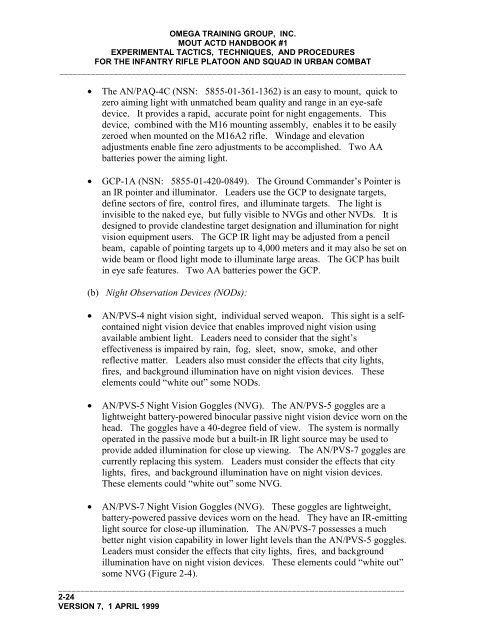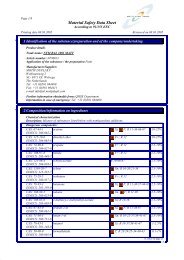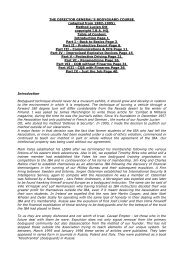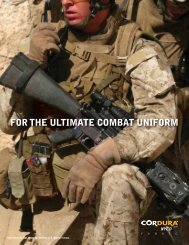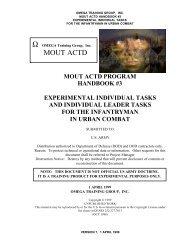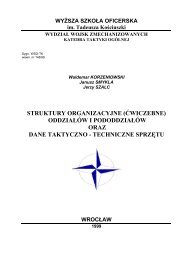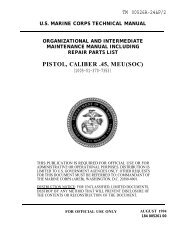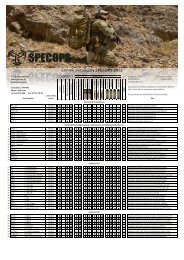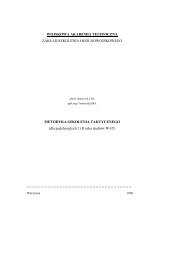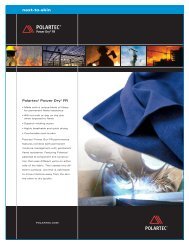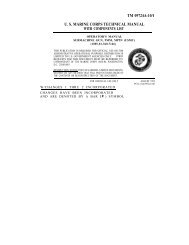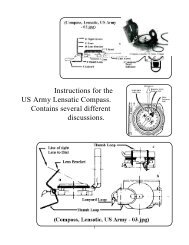mout actd program handbook #1 experimental tactics ... - SpecOps
mout actd program handbook #1 experimental tactics ... - SpecOps
mout actd program handbook #1 experimental tactics ... - SpecOps
You also want an ePaper? Increase the reach of your titles
YUMPU automatically turns print PDFs into web optimized ePapers that Google loves.
OMEGA TRAINING GROUP, INC.<br />
MOUT ACTD HANDBOOK <strong>#1</strong><br />
EXPERIMENTAL TACTICS, TECHNIQUES, AND PROCEDURES<br />
FOR THE INFANTRY RIFLE PLATOON AND SQUAD IN URBAN COMBAT<br />
_____________________________________________________________________________<br />
• The AN/PAQ-4C (NSN: 5855-01-361-1362) is an easy to mount, quick to<br />
zero aiming light with unmatched beam quality and range in an eye-safe<br />
device. It provides a rapid, accurate point for night engagements. This<br />
device, combined with the M16 mounting assembly, enables it to be easily<br />
zeroed when mounted on the M16A2 rifle. Windage and elevation<br />
adjustments enable fine zero adjustments to be accomplished. Two AA<br />
batteries power the aiming light.<br />
• GCP-1A (NSN: 5855-01-420-0849). The Ground Commander’s Pointer is<br />
an IR pointer and illuminator. Leaders use the GCP to designate targets,<br />
define sectors of fire, control fires, and illuminate targets. The light is<br />
invisible to the naked eye, but fully visible to NVGs and other NVDs. It is<br />
designed to provide clandestine target designation and illumination for night<br />
vision equipment users. The GCP IR light may be adjusted from a pencil<br />
beam, capable of pointing targets up to 4,000 meters and it may also be set on<br />
wide beam or flood light mode to illuminate large areas. The GCP has built<br />
in eye safe features. Two AA batteries power the GCP.<br />
(b) Night Observation Devices (NODs):<br />
• AN/PVS-4 night vision sight, individual served weapon. This sight is a selfcontained<br />
night vision device that enables improved night vision using<br />
available ambient light. Leaders need to consider that the sight’s<br />
effectiveness is impaired by rain, fog, sleet, snow, smoke, and other<br />
reflective matter. Leaders also must consider the effects that city lights,<br />
fires, and background illumination have on night vision devices. These<br />
elements could “white out” some NODs.<br />
• AN/PVS-5 Night Vision Goggles (NVG). The AN/PVS-5 goggles are a<br />
lightweight battery-powered binocular passive night vision device worn on the<br />
head. The goggles have a 40-degree field of view. The system is normally<br />
operated in the passive mode but a built-in IR light source may be used to<br />
provide added illumination for close up viewing. The AN/PVS-7 goggles are<br />
currently replacing this system. Leaders must consider the effects that city<br />
lights, fires, and background illumination have on night vision devices.<br />
These elements could “white out” some NVG.<br />
• AN/PVS-7 Night Vision Goggles (NVG). These goggles are lightweight,<br />
battery-powered passive devices worn on the head. They have an IR-emitting<br />
light source for close-up illumination. The AN/PVS-7 possesses a much<br />
better night vision capability in lower light levels than the AN/PVS-5 goggles.<br />
Leaders must consider the effects that city lights, fires, and background<br />
illumination have on night vision devices. These elements could “white out”<br />
some NVG (Figure 2-4).<br />
_____________________________________________________________________________<br />
2-24<br />
VERSION 7, 1 APRIL 1999


